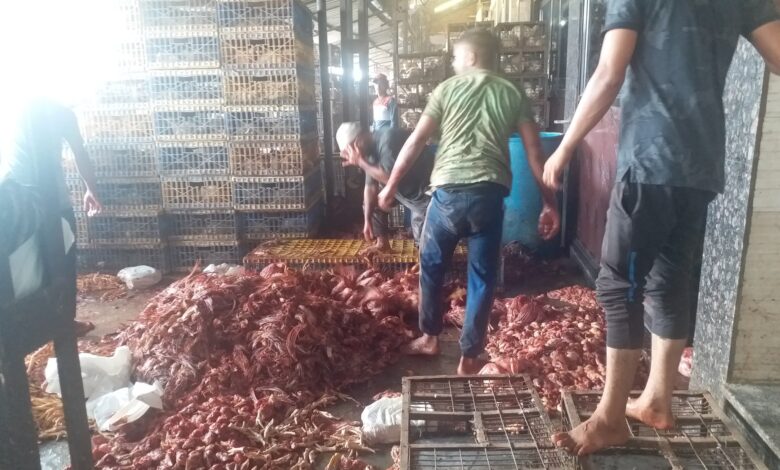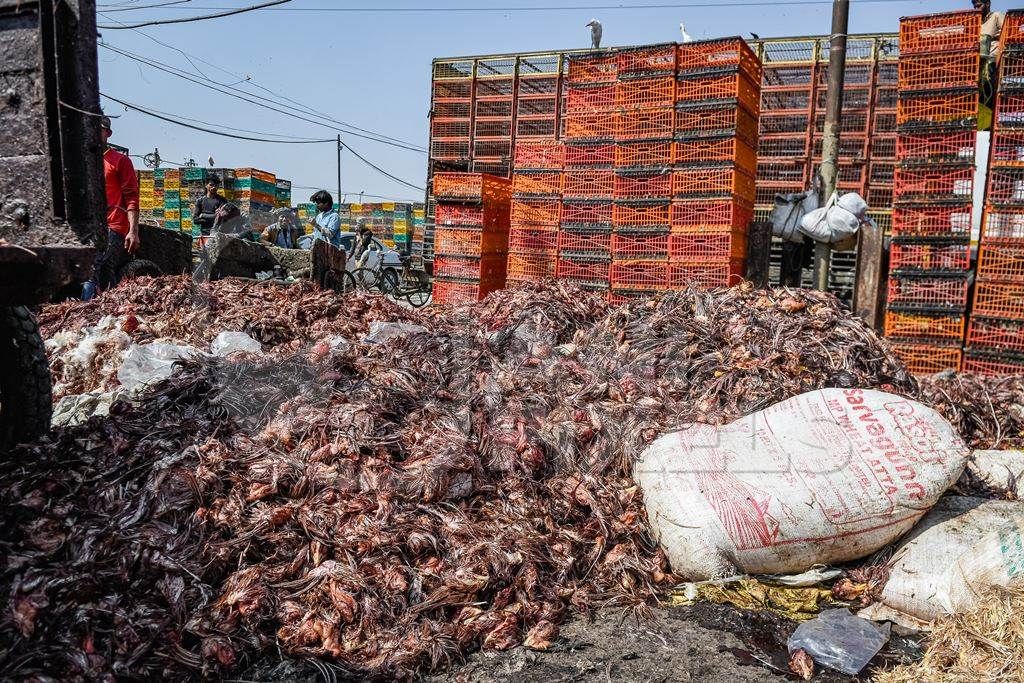From Fresh to Fake: The Untold Truth of Kashmir’s Readymade Meat

Kashmir’s Meat Market: Behind the Counter Lies a Silent Crisis
On a damp morning in Srinagar’s bustling meat market, the smell of fresh cuts mixes with the metallic tang of blood. The voices of customers bargaining with butchers rise above the sound of knives striking wooden blocks. To the average shopper, the meat looks clean, neatly displayed on counters. But what most do not realize is that beneath this surface of apparent hygiene lurks a disturbing truth. The very mince that finds its way into Kashmiri kitchens could be tainted with filth, industrial waste, and adulterants that no one ever consented to eat.
For years, whispers about “rotten meat” have lingered in hushed tones across the Valley. Many dismissed them as rumors. But a weeks-long investigation—drawing on insider testimonies, official documents, and recent enforcement raids—paints a bleak picture of an industry riddled with malpractice, where profit often takes precedence over public health.
Inside the Factories: Where Meat Turns Into Mystery

The journey begins in industrial meat-export units, massive facilities where bulk cuts of chicken or mutton are ground into mince. One insider, employed at a Delhi-based unit that supplies consignments to Kashmir, admitted what most fear but few dare to say publicly:
“You can’t imagine what all goes into that grinder. Egg tray paper covers, chicken feet, intestines, expired bread, sometimes even rotting meat that would otherwise be thrown away. Once it’s minced, no one can tell the difference.”
According to him, paper from egg trays—often soiled and stained—is shredded into the mix to increase volume at little cost. Once the meat passes through industrial blades, the adulterants become indistinguishable from flesh.
Consumers believe they are buying fresh ground meat. In reality, they may be taking home a product laced with substances unfit even for animal consumption.
Ghazipur Mandi: The Heart of a Hidden Trade

Much of this supply chain leads back to Ghazipur, Delhi’s sprawling meat market, one of the largest in Asia. On the surface, the mandi operates in orderly fashion: crates stacked in rows, auctions conducted briskly, and commission agents scribbling numbers on slips. But behind these layers is another world.
An insider who has worked there for eight years explained:
“There is the mandi for inspectors, the mandi for customers, and the mandi for the real trade. Diseased animals, expired consignments, and infected birds all have their place. Once the meat is re-iced, washed with chemicals, or ground into mince, no one can tell.”
Chemicals such as chlorine, ammonium hydroxide, and nitrates are reportedly used to mask decay and restore color to spoiled meat. Workers describe how pale, flabby cuts emerge from chemical baths looking deceptively fresh.
In the grinding sheds, everything is thrown into the machines: trimmings, beaks, feet, egg shells, offal, and sometimes even cardboard or egg tray pulp. The result is a uniform paste that looks convincing, especially once spiced or cooked.
From Ghazipur, trucks head north toward Kashmir. With weak cold-chain facilities, the meat often thaws en route, sweats during transport, and is refrozen upon arrival. Each cycle of thawing and freezing multiplies microbes invisibly, setting the stage for contamination.
Why Kashmir Is Especially Vulnerable
Kashmir’s vulnerability stems from its overwhelming dependence on imports. Official figures suggest the Valley imports nearly 70 percent of its mutton and poultry from outside J&K, with Delhi and Punjab serving as major entry points.
One senior food safety official admitted:
“We do not produce enough meat locally to meet demand. A large share of what reaches Kashmir comes from outside, and we cannot fully monitor the conditions under which it is processed.”
This dependence has created a fertile ground for malpractice. In recent raids, the Food Safety Department seized hundreds of kilograms of stale chicken and unfit meat from godowns in Srinagar and Anantnag. But as one officer conceded, “For every truck we catch, ten go unchecked.”
Kashmir’s own laboratories are ill-equipped to tackle the problem. Many district-level food labs lack modern testing kits. Samples often have to be sent outside the region, delaying enforcement. Without swift testing, adulterators continue operating with little fear of consequences.
The Human Cost: Doctors Sound the Alarm
The impact is already visible in hospitals. Doctors across Kashmir report rising cases of food-borne illnesses.
“Every wedding season, our wards fill with acute gastroenteritis patients,” said Dr. Hilal Manzoor of GMC Anantnag. “The danger isn’t just one bad meal. It’s the long-term effects of consuming adulterated meat—liver damage, infections, even cancer risks. The contamination is invisible until it is too late.”
Medical professionals emphasize that minced meat is particularly risky, as adulteration cannot be detected by sight or smell. By the time it reaches consumers, harmful bacteria or chemicals may already be present.
A Cultural Betrayal
For Kashmiris, meat is more than just food—it is a cultural cornerstone. Dishes like Rogan Josh, Gushtaba, and the elaborate Wazwan feast are symbols of heritage. Purity and quality of meat are considered sacred.
Yet the whispers of adulteration are eroding trust. Traders admit customers increasingly ask for proof of quality, something they themselves cannot guarantee.
A butcher from downtown Srinagar explained:
“When meat is minced, it hides everything. Spoiled cuts, scraps, or even chemical-treated stock—all of it disappears in the grinder. People think they are eating tradition, but often they are swallowing something else.”
Economics of Adulteration
The economics driving this trade are brutal. Fresh, quality meat sells at triple the price of factory-processed mince. For restaurants, caterers, and small eateries operating on thin margins, the cheaper option becomes hard to resist.
A Srinagar restaurant owner confessed:
“I bought chicken mince for 40 rupees a kilo when fresh meat cost 150. Every restaurant does it. To say otherwise would be a lie.”
As adulterated products flood the market, honest suppliers struggle to compete. Traders who want to maintain quality often lose customers to cheaper, tainted alternatives.
Enforcement Without Teeth
Despite occasional raids and seizures, systemic weaknesses allow the trade to thrive. Political and economic interests push against stricter regulation. Transporters treat fines as routine expenses. Retailers fear shortages if they speak out.
One former enforcement officer summarized the dilemma:
“Every link in the chain makes money from speed. Testing slows things down. Without real-time checks and modern labs, raids are little more than rituals.”
The Road Ahead
The crisis unfolding in Kashmir’s meat industry is not simply about hygiene—it is about trust, health, and culture. At stake are thousands of households who consume meat daily, an industry worth crores, and a culinary tradition central to Kashmiri identity.
Experts argue that solutions must begin with systemic reform:
- Establishing advanced testing laboratories within Kashmir.
- Strict regulation of imports at entry points.
- Transparency in supply chains, with traceable origins of consignments.
- Stronger penalties for adulterators to deter malpractice.
- Public awareness campaigns encouraging consumers to demand accountability.
Until such measures take root, the Valley will remain exposed to an invisible danger. Every plate of kebab, every serving of qorma, carries a hidden question: what exactly is being eaten, and at what cost?





